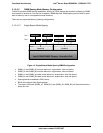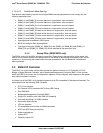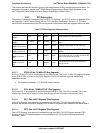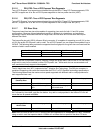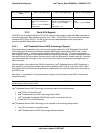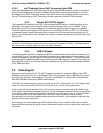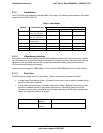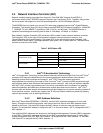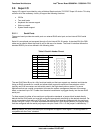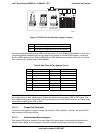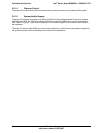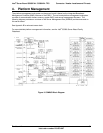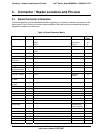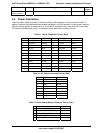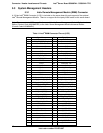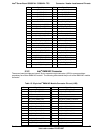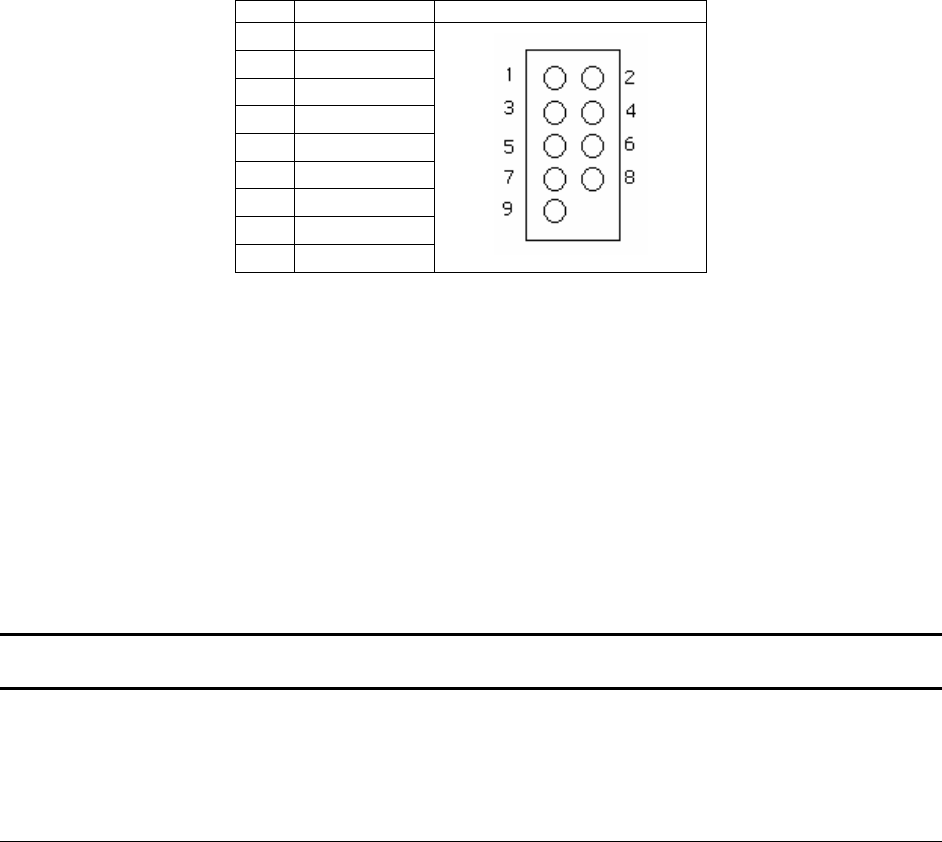
Functional Architecture Intel
®
Server Board S5000PAL / S5000XAL TPS
Revision 1.4
Intel order number: D31979-007
40
3.5 Super I/O
Legacy I/O support is provided by using a National Semiconductor* PC87427 Super I/O device. This chip
contains all of the necessary circuitry to support the following functions:
• GPIOs
• Two serial ports
• Keyboard and mouse support
• Wake up control
• System health support
3.5.1.1 Serial Ports
The server board provides two serial ports: an external RJ45 serial port, and an internal DH10 serial
header.
Serial A is an optional port accessed through a 9-pin internal DH-10 header. A standard DH10 to DB9
cable can be used to direct the Serial A port to the rear of a chassis. The Serial A interface follows the
standard RS232 pin-out as defined in the following table.
Table 8. Serial A Header Pin-out
Pin Signal Name Serial Port A Header Pin-out
1 DCD
2 DSR
3 RX
4 RTS
5 TX
6 CTS
7 DTR
8 RI
9 GND
The rear RJ45 Serial B port is a fully functional serial port that can support any standard serial device.
Using an RJ45 connector for a serial port allows direct support for serial port concentrators, which
typically use RJ45 connectors and are widely used in the high-density server market. For server
applications that use a serial concentrator to access the system management features of the server
board, a standard 8-pin CAT-5 cable from the serial concentrator is plugged directly into the rear RJ45
serial port.
To allow support for either of two serial port configuration standards, a jumper block located directly
behind the rear RJ45 serial port must be configured appropriately according to the desired standard. For
serial concentrators that require a DCD signal, the jumper block must be configured with the serial port
jumper over pins 1 and 2. For serial concentrators that require a DSR signal (Default), the jumper block
must be configured with the serial port jumper over pins 3 and 4. Pin 1 on the jumper is identified by “*”.
Note: By default, the rear RJ45 serial port is configured to support a DSR signal. This configuration is
compatible with the Cisco* standard.



